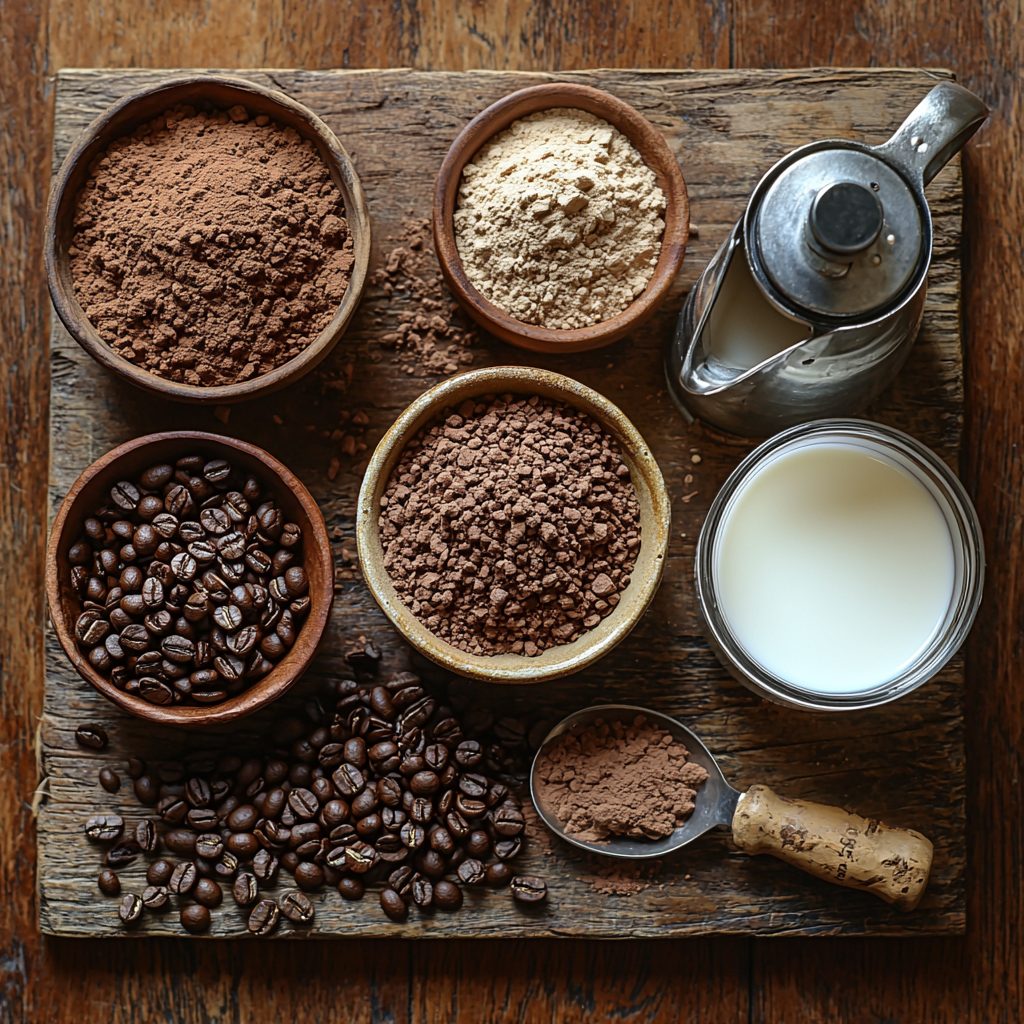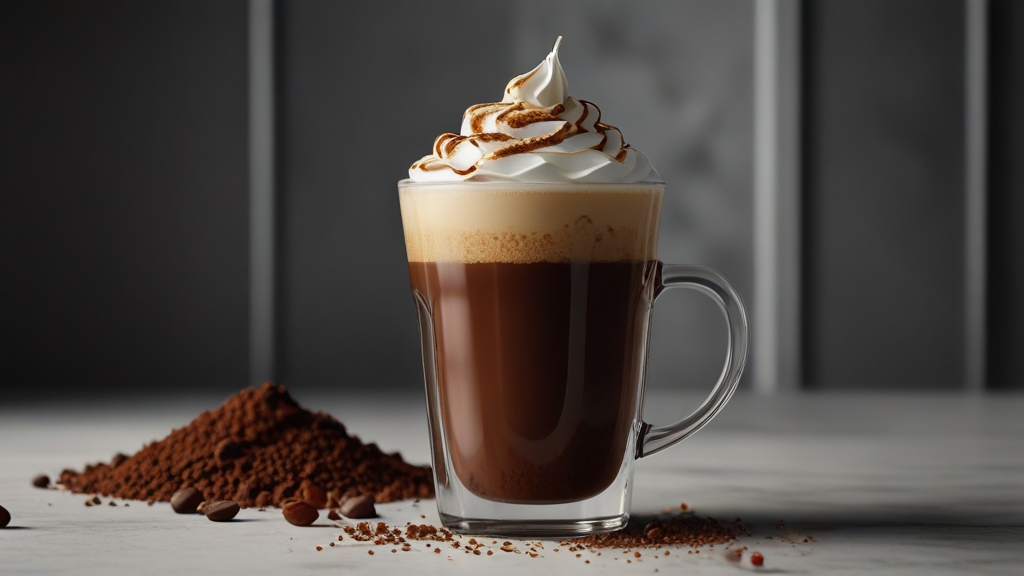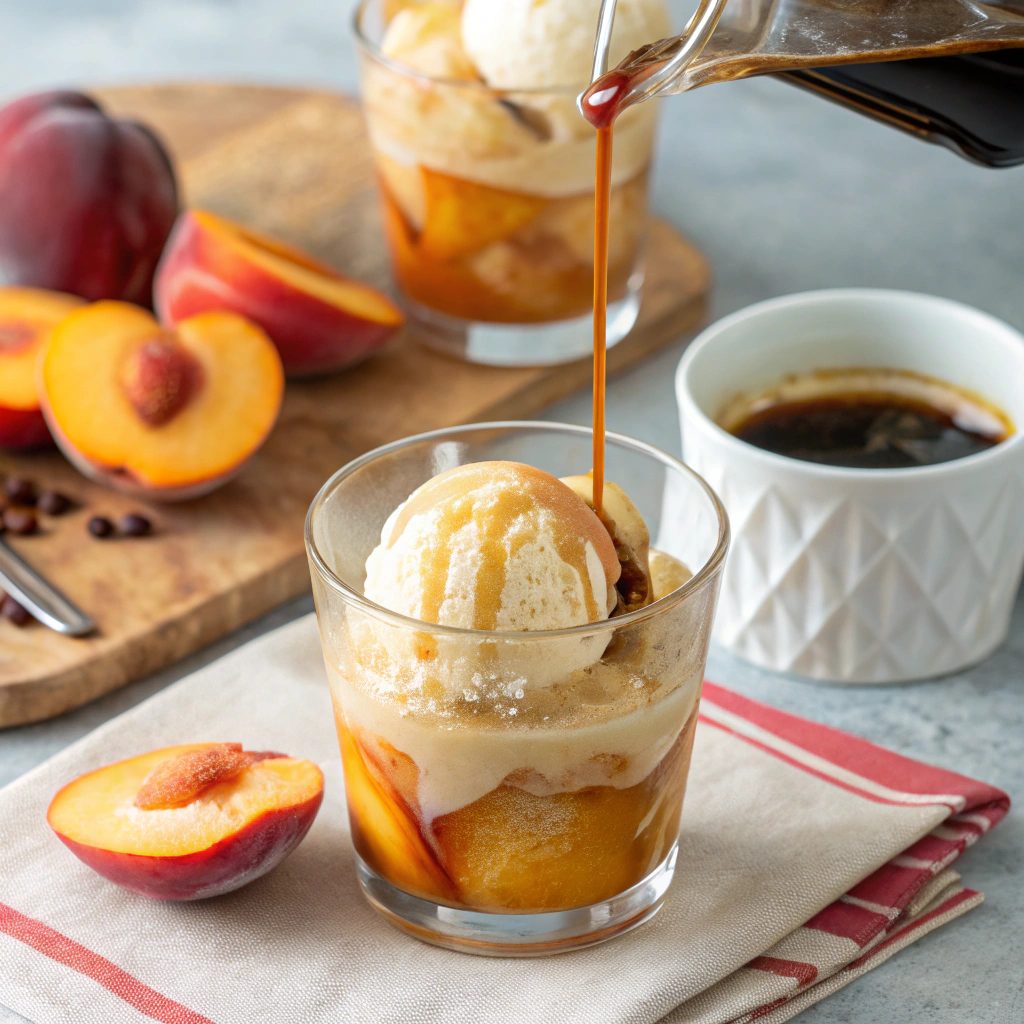Jump to Recipe
Coffee brings me together with other people and let me try new tastes, so I can’t wait to share the beauty of chicory coffee with you. We’ll talk about its history, how to make a cozy cup of chicory coffee at home, and the health benefits of this herb.
What is Chicory Coffee?
Chicory coffee is a coffee alternative that is made from chicory root that has been roasted. It’s brewed like coffee, but it doesn’t have any coffee beans in it. Chicory is a plant that can be recognized by its bright blue flowers. Instead, we pick, dry, and roast its roots until they turn a dark brown color. This gives the food a warm, earthy flavor that is both familiar and new.
Chicory coffee has a mild bitter taste and a rich nuttiness; it tastes a bit like roasted coffee. Some people want to try something that tastes like coffee but doesn’t have caffeine. Ground chicory root can be a tasty, low-acid alternative to coffee.
A Glimpse into the History of Chicory Coffee
The story of chicory coffee has deep roots, both in the ground and in the mind. While the US was at war, there wasn’t enough coffee, so people looked for other things to do.
This is when chicory root started to be used instead of coffee. The mix was loved right away in New Orleans, which is known for its chicory coffee. These days, Orleans-style coffee has a strong mix of coffee and chicory, which makes a unique drink that people from all over the world love.
When the price of coffee in France went up, people switched to roasted, dried chicory root, which was easier to find and cheaper. It made its way to New Orleans in the end, where it became an important part of coffee culture.
When the drink is drunk au lait (with steamed milk), the chicory makes it smooth and full-bodied. This brings out the flavors so well.
How and why people love chicory coffee
So why should you drink chicory coffee instead of regular coffee? Chicory has a very interesting history, and it is also very good for you. Inulin, a type of fiber found in raw chicory root, can help your body digest food.
Also, it’s full of antioxidants, which are good for your health in general. Also, many people find it easier on their stomachs because it has less acid than coffee.
If you want a break from caffeine, chicory coffee is also a great choice. It still tastes like coffee, which is warming and slightly bitter, so you’re not giving up flavor. For me, chicory coffee is a cozy, caffeine-free alternative for when I want a cup of coffee in the afternoon but don’t want the jitters.
How to Make Chicory Coffee at Home
If you’re ready to make chicory coffee yourself, it’s simpler than you might think. Here’s how I prepare it:
Ingredients and Tools
- Ground chicory root (easily to find pre-ground in most grocery stores).
- Coffee beans (optional if you want a chicory-coffee blend).
- Water.
- A French press, drip coffee maker, or pour-over setup.

Step-by-Step Guide
- Measure Your Ingredients: Start with a 70/30 blend of coffee to chicory. For instance, if you’re making a single serving, use 2 tablespoons of coffee and about 1 tablespoon of chicory. If you’re a purist, feel free to use 100% chicory.
- Brew as Usual: Add the mixture to your French press, drip coffee maker, or pour-over filter. Brew it similarly to coffee, keeping in mind that chicory brews quickly, so a shorter brew time works well to avoid any extra bitterness.
- Experiment with ratios: If you want a stronger chicory flavor, go for a 50/50 blend or even more chicory than coffee. A higher ratio will bring out the rich, rooted chicory notes that make it unique.
Add Your Personal Twist
This is where you can really make your chicory coffee your own. Add steamed milk and a little sugar for a New Orleans-style twist. To make it feel cozy and fall-like, you can also sprinkle it with cinnamon or nutmeg.
For a little sweetness, I like to play around with honey and almond milk.
Tips for Enjoying Chicory Coffee
After making your chicory coffee, you should drink it with something that goes well with its earthy taste. A slice of pumpkin bread, biscotti, or shortbread are all great with it because they are slightly sweet or nutty. If the taste is too strong for you, adding a little sugar can help you get used to it.
If you like to try new things, you can use roasted ground chicory root in cakes or ice cream that call for brewed coffee. Its unique taste can add a twist you didn’t expect!
Wrapping Up: Why Chicory Coffee Deserves a Place in Your Routine
In the end, chicory coffee is more than just a drink. It’s a taste of history, a tasty alternative to coffee, and an easy way to switch up your coffee routine.
The history of chicory coffee goes back to France, but it is also a big part of New Orleans culture. If you want an alternative with less caffeine or just want to try something new, chicory coffee is a good choice.
So get a warm cup of coffee and remember that coffee culture is about more than just caffeine with every sip. You should try making chicory coffee at home and let me know how it goes. After all, every sip is better when shared.

Homemade Chicory Coffee
Ingredients
Method
- Boil Water: Bring 2 cups of water to a boil.
- Brew Chicory: Add 2 tablespoons of ground chicory to the boiling water.
- Steep: Allow the chicory to steep for about 5 minutes.
- Strain: Use a strainer or French press to strain the chicory grounds from the water.
- Serve: Pour the brewed chicory coffee into a mug. Add milk, sweetener, and optional flavours as desired.
Notes
Frequently Asked Questions
1. What is chicory coffee made from?
To make chicory coffee, you roast chicory root, which comes from a plant with blue flowers and is dried, ground, and brewed like coffee. It tastes earthy and nutty and can be used instead of coffee without the caffeine.
2. Does chicory coffee have caffeine?
Pure chicory coffee does not have caffeine in it. But if you want a low-caffeine drink that still tastes like coffee, you can mix it with coffee beans.
3. What are the health benefits of chicory coffee?
Inulin, a prebiotic fiber found in chicory coffee, helps keep your gut healthy. It also doesn’t have caffeine, is high in antioxidants, and is less acidic than regular coffee. This makes it a good choice for people with sensitive stomachs.
4. How does chicory coffee taste compared to regular coffee?
The taste of chicory coffee is a bit bitter, nutty, and earthy, like roasted coffee but with a twist. When mixed with coffee, it gives Orleans-style coffee a rich, full-bodied flavor that many people like.
5. How can I make chicory coffee at home?
If you use ground chicory root in a French press, drip coffee maker, or pour-over, you can make chicory coffee. Start with a 70/30 mix of coffee and chicory, or change it to your liking.
6. Where can I buy chicory root for making chicory coffee?
It is easy to find ground chicory root or roasted chicory root products in grocery stores, specialty coffee shops, and online. Find brands that sell either pure, dried chicory root or coffee blends with chicory root.
7. Is chicory coffee safe to drink every day?
Chicory coffee is safe to drink every day, yes. It has health benefits like helping the digestive system and doesn’t contain caffeine. Chicory can be good for you in small amounts, but too much of it can make some people feel sick to their stomach.
8. What is the best way to enjoy chicory coffee?
Enjoy chicory coffee au lait (with steamed milk) for a classic New Orleans twist. You can also experiment with adding spices like cinnamon or nutmeg or pair it with sweet treats to enhance its earthy flavor.
9. Can I make cold brew with chicory coffee?
Yes! If you soak ground chicory root in water overnight, you can make a cold brew with it. This makes a smooth, cool, and flavorful cold brew that is great for warmer days.
10. Why is chicory coffee popular in New Orleans?
In New Orleans during the Civil War, when coffee was hard to come by, chicory was mixed with coffee and became very popular. The city embraced this tasty tradition, and it’s still a popular dish in the area.




